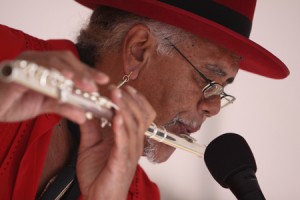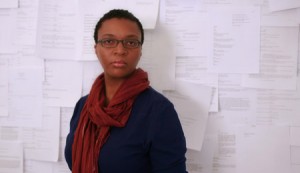CFA Arts Administration Intern Monica M. Tinyo ’13 talked with Director Jeffrey Sichel, S. Dylan Zwickel ’14, Alma Sanchez-Eppler ’14, and graduate students Gabriel Kastelle and Huan Li about this weekend’s Theater Department production of “Peony Pavilion.”

I found out very quickly that Director Jeffrey Sichel is true to his word. Mr. Sichel is a specialist in Intercultural and Interdisciplinary Performance Practice and Theory who holds an M.F.A. in Directing from Columbia University and is working toward his Doctorate in Performance Studies from The Shanghai Theatre Academy. Within a couple minutes of talking with him about his collaborative, process-driven ideology, he extended our interview to include the entire ensemble, or what he calls the “brain trust,” insisting I stay for part of the rehearsal and talk with each and every ensemble member.
Two hours later, I emerged from the intimate setting of the theater and realized that I had experienced something unique, something I wouldn’t have grasped from interviewing just one member of the ensemble. The specialty of the ensemble’s work lies in the safe but energized space that it produces; the play is a product of close-knit collaboration and a genuine eagerness for new modes of acting and thinking.
Peony Pavilion is a 400 year old Chinese opera that has been transformed, seemingly by magic, into a story of love, death, and empowerment that is as simple in essence as it is aesthetically beautiful. “Part Romeo and Juliet, part Orpheus, and part Edgar Allen Poe,” the narrative is “weirdly relatable, in the way that musical theater is relatable. There are these people that are doing these things that they wouldn’t do in real life, but it makes sense why they are doing them in the context of their world,” explains S. Dylan Zwickel ’14, one of the three student dramaturges.
Mr. Sichel goes on to explain the work is “not experimental, or even particularly strange, its just the other.” The work is intercultural in theme and style, but it is not what we think of as experimental from a Western perspective; it is more formal in narrative and structure than most plays performed at Wesleyan and in contemporary professional theater, but unlike anything most people have seen before.
As part of their intercultural learning process, the ensemble learned Chinese acting methods that forced them to learn characters “from the outside in, rather than the Western method of learning characters from the inside out.” The actors learned traditional choreography as well as masculine and feminine physicalities before they learned about and developed the characters, which made them see the characters in a different light. The students were surprised that they “noticed specific physicalities in the characters, but not gender.”
The actors in the all-women ensemble explain that although it is an “all female cast, it is not a specifically feminist play; Chinese traditional culture is heteronormative and we did choose to have an all-woman cast, but gender is not important in the play. The all-woman cast allowed characters emerge in which gender doesn’t matter.” Alma Sanchez-Eppler ’14, the student dramaturge who took on the daunting task of adapting an almost 400 page manuscript, explains that the play is a story of self actualization and empowerment of a female protagonist, but is more about a character’s journey than dichotomies of gender.
With the support of her ensemble and incredible stamina, Alma narrowed the script to 40 pages, extracting the love story that follows the protagonist. Although she was not initially expecting a job of this magnitude, part of Jeffrey’s talent “is forcing a project to be everyone’s project and pushing [ensemble members] into roles that [they] would have never imagined they could do.”
The play is accompanied by a live music ensemble with original music by Gabriel Kastelle, a Wesleyan graduate student of experimental music and composition. The music was able to incorporate melodies from the score of the opera. The journey of the score is as epic as the protagonist’s journey in the play. After finding the score and receiving Wesleyan Library funding, another graduate student, Huan Li, was tasked with picking up a version of the score from China that had been poured over by scholars and meticulously translated from the ancient notation to the more legible, modern Chinese notation. He almost giddily explains, “I have fallen in love with lyrics; they are so urgent and earnest to communicate. Lyrics want to share, want to communicate and get out—I love handling that.”
His original compositions mirror the passion he and the rest of the ensemble have exhibited throughout this process. This fervor will surely be translated into the performances that run from Thursday through Saturday.
Peony Pavilion by Tang Xianzu
Directed by Jeffrey Sichel
Thursday, April 25 & Friday, April 26, 2013 at 8pm
Saturday, April 27, 2013 at 2pm & 8pm
CFA Theater
$8 general public; $5 senior citizens, Wesleyan faculty/students, non-Wesleyan students; $4 Wesleyan students




